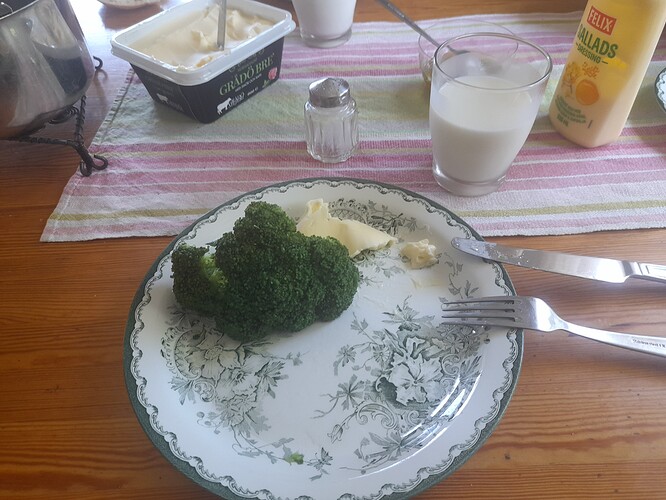Hmm. global warming?
It looks like early black locust or cottonwood seed puffs to GW advocates. Most of whom never lived at a place with a lawn that big.
Well we got to 38F at the house last night Jan and the garden is about a hundred feet lower in elevation and always at least 5 degreesF colder in the mornings so very possible we got frost down there last night. I put up a tent and moved all my starts into it yesterday but I have lost a lot of cucumbers in the greenhouse they were in earlier with temps that never got below 40’s. Growing food is not for the weak willed.
Yes, it’s the same here, when I have 3.5c 38f on the upper side of the cabin, I have frost on the other side down towards the pond.
A few tips for this time of year. just now able to plant out my starts because it has been so cool to cold this year. Not all bad. the cucumbers are a little large for their containers but on the plus side, we are getting past the time when cucumber beetles are the worse and even it we get some the plants are large enough to better deal with them. Can also plant another bunch of starts and semi-direct sow them. Any curcubit can still be started but I like to start them out side in something like small yogurt cups or 2 inch cells with the bottoms cut out. If the seed sprouts and does well then you can just stick the container in a bed and leave the cel or cup on as a collar rather than sticking a hit or miss seed in valuable ground. Just a couple simple tricks I’ve picked up over the years.
Hb Nematodes attack cucumber beetles in the larvae stage.
Since they are found naturally, aerobic, and they aren’t super cheap, it is one of the reasons why I chose the aerated soil wash so they don’t drown. You can multiply them if you get larvae like wax worms, or some other grub as a host. These also feed on ticks, but only the gorged females.
Here Ill post this. If you take a leaf, crush it to squeeze the juice out of it,likke using a garlic press and then you use a refractometer (the cheap ones are like 25 dollars) to measure the bricks content. You can get a rough idea of your plant health.
And what I haven’t ever seen in a LONG time is the nice chart that goes along with that measurement. ![]()
I had not heard of that table before and as much as I like messing with things like hydroponics I shy away from to much technicality in growing food. Of course PH must be monitored but otherwise if a human spends enough time growing and tending plants, a symbiosis develops where you sense what a plant needs to be healthy. I know this sounds pretty Woo but ask anyone who really enjoys growing and they will comfirm this. I do not get that same sense from growing hydro in the greenhouse in chemical fertilizers. The soil is the essential element to facilitate that communication between man and plant. This is not to say that I have a disdain for hydro and really enjoy working with it but have to wonder if there is not something spiritual added to food tended in the earth. Too far out? I’d be interested in knowing if anyone else knows what I’m talking about.
Tom, I wouldnt call it spiritual but more small amounts of something. Soil is complete, compared to hydroponics. If you want to get spiritual, then soil is how the Big Creator meant it. And some soil is better then other, it is up to you to ad or remove the last details for your purpose. That is my thing against hydroponics, you just cant deliver the whole package.
That is pretty much the philosophy the people who developed Korean Natural Farming and JADAM have promoted and why I have pretty much shifted my view of growing to theirs, Joep. Everything I need can be found in the materials around me. I was not always aware of the mycorrhizal network that ties everything that grows in the soil together. Once I understood it I abandoned tilling and fighting weeds and started growing in beds of soils I assembled out of decomposed plants, leaves, bio-char- and humus gathered from the forest. I’m old now and it took me a whole lifetime to understand that everything we need to live well and prosper was always at our fingertips, including fuels and power.
It isn’t new and it is very low tech. It first gained popularity in fruit farmers in the 50s, and corn in the 60s-70s…
The refractometers were expensive. like the first one I used was like 300 dollars back in the 70s… ‘don’t drop it!’. probably the cheap ones are better then the 300 dollar ones from the 70s,
This guy gives an explanation of why bugs don’t eat healthy plants and relates it to the sugar levels of the plant. Bugs can’t tolerate too much sugar.
Once you know your sugar levels, if they are low, it is up to you to figure out why. Leaf testing is a more popular way to help figure out what nutrients are missing. That is much higher tech and some of it is cutting edge tech.
Yum… It got so hot and dry here my tops started bolting almost right away.




